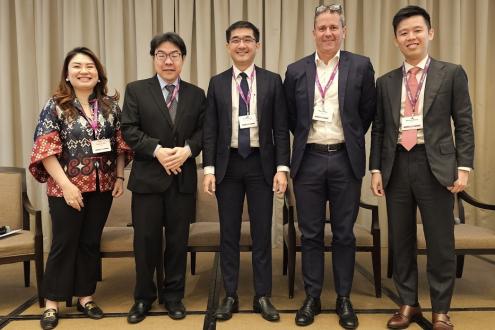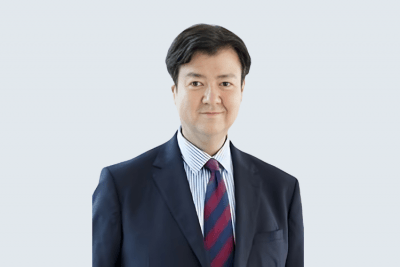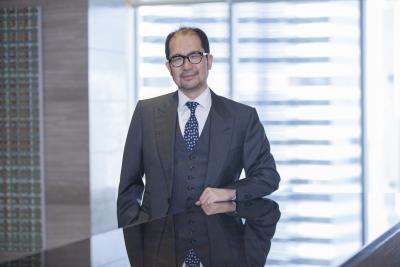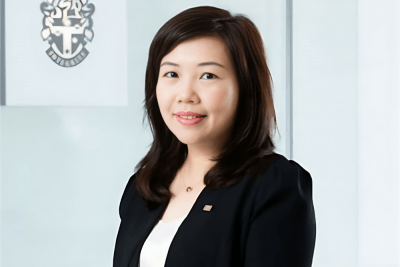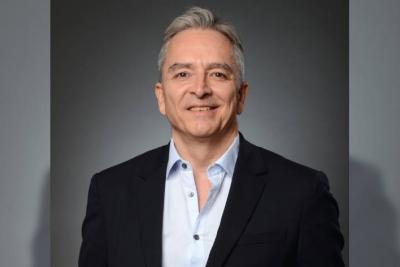Wealth Solutions & Wealth Planning
The Role of Trustees in AML Risk Management and Regulatory Obligations & Realities
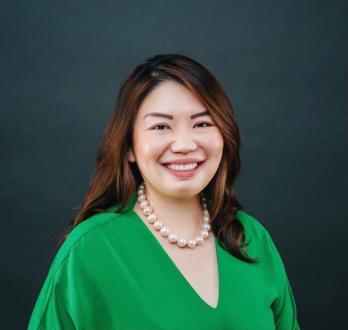
Jul 12, 2023
The Hubbis Wealth Solutions Forum in Singapore on June 14 saw a host of experts offer their views on how the wealth management industry in Asia can help wealthy clients enhance their planning and structuring. In the second panel discussion of the day, a small group of experts drilled down into some quite complex areas of trusts and their regulation. The chair asked questions such as whether trusts are now overregulated from an AML perspective, what type of client trustees can take on, and what types of AML protocols need to be in place, as well as what of the more esoteric assets – for example, cryptocurrencies – can viably be onboarded to trusts. The panel did an excellent job of conveying to delegates some of the challenges the trust and financial and legal experts face in living up to the incredibly onerous and increasingly demanding rules and expectations of the regulators at home and globally.
Chair: Sharon Yam, Regional Head, APAC, Ocorian
Panel Members
Shawn Wang
Head of Trust Service, Singapore
Ocorian
Yeoh Lian Chuan
Partner
Withers KhattarWong LLP
Ethan Chue
Chief Executive Officer
Family Succession Advisors
Marc Anley
Partner
Deloitte
Are trusts in Singapore overregulated from an AML perspective?
A panellist reported that while banks and other financial institutions must conduct their AML all the way deep into related beneficial ownership, and trusts must conduct AML in both directions – up and down - to assess the entire ownership and asset structure.
Trusts, therefore, appear overregulated in that it is today increasingly tough to run a profitable trustee business, they reported, due to all the local and indeed global regulations that must be taken on board and adhered to.
In Singapore, as a regulated jurisdiction, a trust company should include a detailed risk-based approach and explain to clients where they must draw lines in the sand. “Nevertheless,” this panellist concluded, “the wealth management business is so robust that despite the pressures, business is still overall positive.”
Another perspective came from a lawyer who observed that professionals working with these clients might not have the resources to conduct full AML and KYC, but they can leverage the different financial institutions and accountants and consultants to obtain their reports on those clients.
Are there difficulties in taking on particular types of clients of nationalities, for example from North Asia in Singapore?
A panellist reported that they have a sizable book including North Asia clients but that many clients might have worked in lighter regulation jurisdictions before coming to Singapore, for example, Hong Kong where trustees are licensed but not regulated.
“They or their lawyers might come to us proposing a structure with their client’s name peppered all over the trust, settler, beneficiaries, protector, appointer, and sometimes even as directors of the underlying company, and even bank account signatories,” he said. “But we have to explain to the clients that what is permissible might not be beneficial for the structure, for the client, or even for us as trustees.” He concluded that in general, regulation is helping shift the quality of clients and the structures.
“What the MAS might demand is part of it,” he added, “but there is a more general obligation also to know your customer, and as trustees become deeply involved, they hold the assets, they will be at risk themselves, but they need to manage the exposures from a commercial perspective.”
The difficulties UHNW families face with their trustee and their wealth management partners
“Most clients have no clue as to the intense screening of their and family names going on behind the scenes,” a speaker told delegates.” But families have begun to realise that they need to provide more information than was the norm in the past. Even a private bank that already handles their relationship might take six months to set up an account for their trust succession structure, as the bank has to go through all the hoops again.”
He said clients want more than just products, so communication is needed to convey ideas to family members.
“Clients need us to help encourage a more robust family governance approach, so we work closely to educate them in these areas and bring family members together so as to avoid future misunderstandings and potential conflicts,” he observed.
Could the best practices proposed by the Singapore regulator be somewhat overreaching or are they fair in light of the risk of financial crimes?
The regulatory paper and guidance focuses on a few key areas such as structures with multi-jurisdictions and multiple layers, on PTCs, on corporate protectors, settlors, and beneficiaries.
The paper focuses on various categories. One category would be non-trustee-managed companies, such as operating companies, but not limited to operating companies. The second group involves entities with third-party shareholders where the paper recommends that you do due diligence, not just your chain, but up the chain of other unrelated shareholders.
The third point, a guest reported, is that when looking at the settlors and beneficiaries, you need a degree of professional scepticism in your mindset.
“First, there is a distinction between complexity and risk, whereby some of the more complex structures can be less risky than the less complex structures that involve questionable clients or assets,” a speaker observed. “Due diligence needs to be sensibly conducted, and not only directed at complex structures and situations.”
They noted that some trust companies are asset gatherers, and they look to invest in [mainstream] financial assets, while others will take on non-bankable assets, and there may be some that will take on a purely AML role, for example, for PTC structure, so the different trust companies tick different points.
Can the professionals really fully live up to the expectations of the regulators?
A lawyer noted that the paper asks for every directive to be verified and that can be quite onerous. “Our firm, for example, insists that you have a likeness statement or some sort of likeness verification as good practice,” he said.
A guest added that the paper also asks for annual reviews of financial statements, but that is incredibly difficult to assess and onerous, certainly from a lawyer’s perspective.
“As trustees in the industry, it appears that the regulator is good intentioned and wants to ensure best practices, but in reality, it seems incredibly difficult to perform some of the checks being proposed to such forensic levels of detail,” a speaker concluded.
Another view came from a panellist who observed that the Financial Action Task Force is continually looking at illicit financial flows, money laundering, and terrorist financing, and the FATF visits countries, with Singapore’s next visit due in 2025.
To help with this, he reported that the MAS has two projects called Vision and COSMIC. Vision is about using the data that the MAS has from banks, insurance companies, and trust companies, to join the dots and look for connected dots that will be used to then help combat financial crime, while COSMIC is about sharing information between organisations. “The idea,” he said, “is that it takes deep collaboration to defeat criminals or organised crime networks.”
As a result, he said trustees need to be aware that while they might screen the direct beneficiaries, trustees, and parties involved in setting up the trust structure, there might be other peripheral individuals that also pose risks.
And he explained that there are new tools and technologies now that have come into the market that help in screening, so the trustees and all the relevant parties, if possible, have a complete 360-degree view of the risks that are posed around the trust. “I think we can all agree it is all going to be more and more difficult and complex,” he said.
A typical trustee would contain anti-Bartlett provisions to protect the trustee from any duty to interfere with the underlying companies. Yet, the MAS expects a licensed trust company to have adequate monitoring and supervision for AML/CFT purposes. How should the trustee manage that tension?
An expert explained: “For those not so familiar, this links back to the 1980 English law case of Bartlett versus Barclays Bank, where the court ruled that a trustee has a duty to receive and evaluate a regular flow of information from the underlying company, and importantly, to act if the need arises, to protect the value of the shares of the underlying company, which means to say sometimes, with this duty a trustee can even ask a shareholder to go so far to replace the directors of the underlying company.”
This, he explained, of course, presents a lot of practical difficulties to both the clients and trustees. “On one hand, the clients are spending 20-30 years building this business, and now for succession planning purposes, they put it under a trust, and then a trustee as a third party seems to be able or obliged to come in and interfere in their business and to even replace key people. And the trustee knows little or nothing about running complex businesses, for example a distribution business across the entire APAC.”
Accordingly, a guest explained that there are anti-Bartlett provisions, essentially removing these duties and/or exonerating the trustee for breach of such duty. “Yes, there is a legal position but on the other hand, there are MAS regulatory requirements to get involved,” they commented. “Actually, anti-Bartlett provisions are only properly effective if the trustee stands entirely aloof from the underlying company, whereas most trustees provide directorships for the underlying companies as well, so it is very tough to state you stand aloof. Moreover, we need to consider the fiduciary duties as directors to safeguard the assets of the company or companies.

Country Head, Ocorian Singapore, Head of Private Clients at Ocorian

More from Sharon Yam, Ocorian
Wealth Solutions & Wealth Planning
Family Businesses – How to Sustain Successful Family Enterprises through the Generations
Latest Articles


